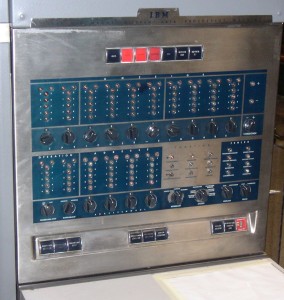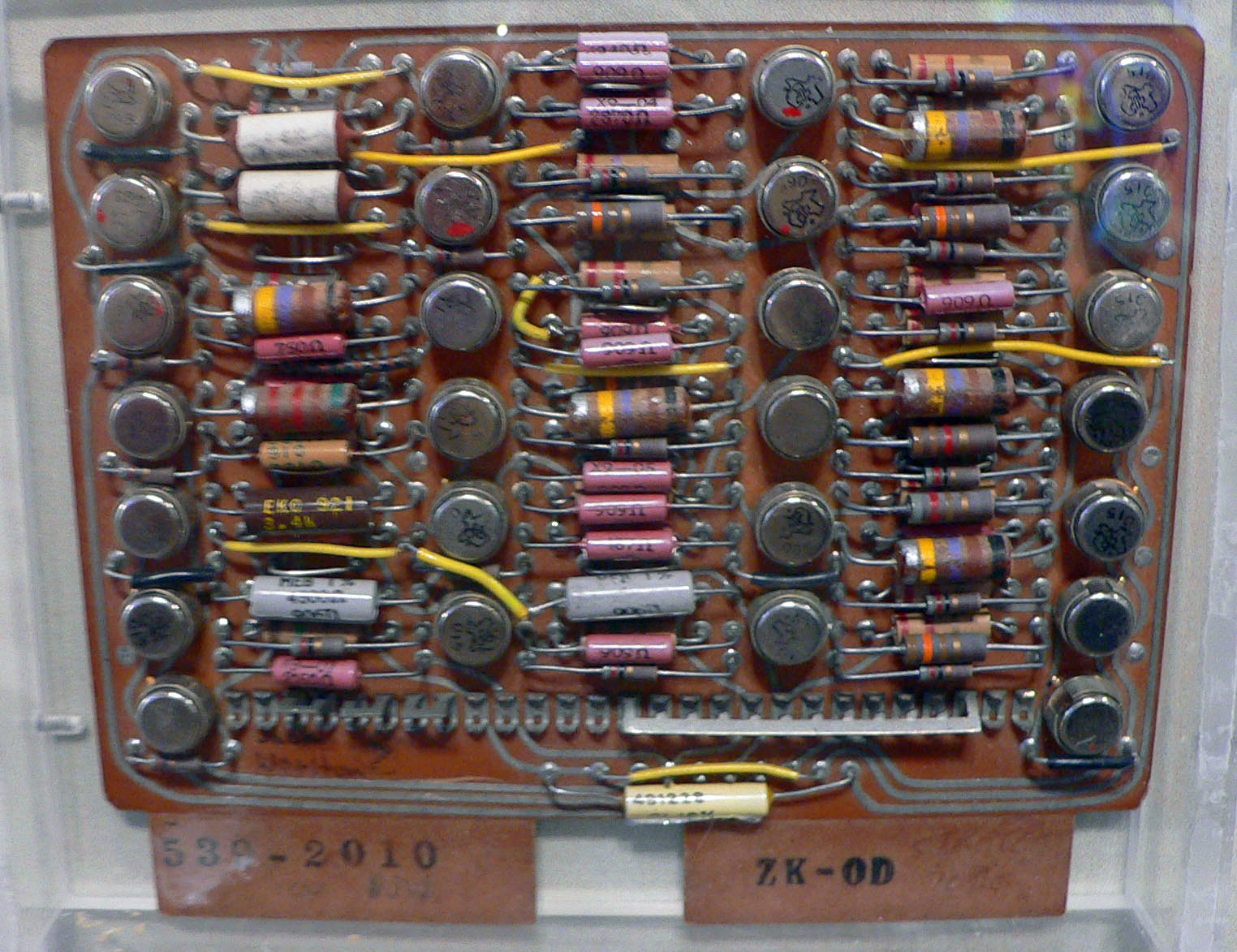|
Computer Usage Company
Computer Usage Company (CUC) (1955–1986), sometimes called Computer Usage Corporation, was the first independent company to market computer software. History CUC is generally considered the first company to develop software independently and to have pioneered the field of programming services. Before this time, software was developed either by the users of the computers, or by the few commercial computer vendors. Computer Usage Company (CUC) was founded in March 1955 by Elmer C. Kubie (1926–2004) and John W. Sheldon. They had formerly worked together at IBM, and planned to offer services to help develop computer programs. The initial investment of US$40,000 supported the founders and a staff of five. The first offices were located in New York City. CUC's first project was a program written for California Research Corporation to simulate the flow of oil. On October 3, 1955, Computer Usage Company, Inc., was incorporated in Delaware. George R. Trimble Jr. became Corporate T ... [...More Info...] [...Related Items...] OR: [Wikipedia] [Google] [Baidu] |
Abacus
The abacus (''plural'' abaci or abacuses), also called a counting frame, is a calculating tool which has been used since ancient times. It was used in the ancient Near East, Europe, China, and Russia, centuries before the adoption of the Hindu-Arabic numeral system. The exact origin of the abacus has not yet emerged. It consists of rows of movable beads, or similar objects, strung on a wire. They represent digits. One of the two numbers is set up, and the beads are manipulated to perform an operation such as addition, or even a square or cubic root. In their earliest designs, the rows of beads could be loose on a flat surface or sliding in grooves. Later the beads were made to slide on rods and built into a frame, allowing faster manipulation. Abacuses are still made, often as a bamboo frame with beads sliding on wires. In the ancient world, particularly before the introduction of positional notation, abacuses were a practical calculating tool. The abacus is still used to te ... [...More Info...] [...Related Items...] OR: [Wikipedia] [Google] [Baidu] |
Cuthbert Hurd
Cuthbert Corwin Hurd (April 5, 1911 – May 22, 1996) was an American computer scientist and entrepreneur, who was instrumental in helping the International Business Machines Corporation develop its first general-purpose computers. Life Hurd was born April 5, 1911, in Estherville, Iowa. He received his B.A. in mathematics from Drake University in 1932, his M.S. in mathematics from Iowa State College in 1934, and his Ph.D. in mathematics from the University of Illinois in 1936. Waldemar Joseph Trjitzinsky was his advisor, and dissertation was ''Asymptotic theory of linear differential equations singular in the variable of differentiation and in a parameter''. He did post-doctorate work at Columbia University and the Massachusetts Institute of Technology (MIT). He was assistant professor at Michigan State University from 1936 to 1942. During World War II Hurd taught at the US Coast Guard Academy with the rank of Lieutenant Commander, and co-authored the textbook for teachin ... [...More Info...] [...Related Items...] OR: [Wikipedia] [Google] [Baidu] |
TI Advanced Scientific Computer
The Advanced Scientific Computer (ASC) is a supercomputer designed and manufactured by Texas Instruments (TI) between 1966 and 1973. The ASC's central processing unit (CPU) supported vector processing, a performance-enhancing technique which was key to its high-performance. The ASC, along with the Control Data Corporation STAR-100 supercomputer (which was introduced in the same year), were the first computers to feature vector processing. However, this technique's potential was not fully realized by either the ASC or STAR-100 due to an insufficient understanding of the technique; it was the Cray Research Cray-1 supercomputer, announced in 1975 that would fully realize and popularize vector processing. The more successful implementation of vector processing in the Cray-1 would demarcate the ASC (and STAR-100) as first-generation vector processors, with the Cray-1 belonging in the second. History TI began as a division of Geophysical Service Incorporated (GSI), a company that per ... [...More Info...] [...Related Items...] OR: [Wikipedia] [Google] [Baidu] |
Operating System
An operating system (OS) is system software that manages computer hardware, software resources, and provides common services for computer programs. Time-sharing operating systems schedule tasks for efficient use of the system and may also include accounting software for cost allocation of processor time, mass storage, printing, and other resources. For hardware functions such as input and output and memory allocation, the operating system acts as an intermediary between programs and the computer hardware, although the application code is usually executed directly by the hardware and frequently makes system calls to an OS function or is interrupted by it. Operating systems are found on many devices that contain a computer from cellular phones and video game consoles to web servers and supercomputers. The dominant general-purpose personal computer operating system is Microsoft Windows with a market share of around 74.99%. macOS by Apple Inc. is in second place (14.84%), and ... [...More Info...] [...Related Items...] OR: [Wikipedia] [Google] [Baidu] |
Texas Instruments
Texas Instruments Incorporated (TI) is an American technology company headquartered in Dallas, Texas, that designs and manufactures semiconductors and various integrated circuits, which it sells to electronics designers and manufacturers globally. It is one of the top 10 semiconductor companies worldwide based on sales volume. The company's focus is on developing analog chips and embedded processors, which account for more than 80% of its revenue. TI also produces TI digital light processing technology and education technology products including calculators, microcontrollers, and multi-core processors. The company holds 45,000 patents worldwide as of 2016. Texas Instruments emerged in 1951 after a reorganization of Geophysical Service Incorporated, a company founded in 1930 that manufactured equipment for use in the seismic industry, as well as defense electronics. TI produced the world's first commercial silicon transistor in 1954, and the same year designed and manufactured t ... [...More Info...] [...Related Items...] OR: [Wikipedia] [Google] [Baidu] |
Dallas, Texas
Dallas () is the third largest city in Texas and the largest city in the Dallas–Fort Worth metroplex, the fourth-largest metropolitan area in the United States at 7.5 million people. It is the largest city in and seat of Dallas County with portions extending into Collin, Denton, Kaufman and Rockwall counties. With a 2020 census population of 1,304,379, it is the ninth most-populous city in the U.S. and the third-largest in Texas after Houston and San Antonio. Located in the North Texas region, the city of Dallas is the main core of the largest metropolitan area in the Southern United States and the largest inland metropolitan area in the U.S. that lacks any navigable link to the sea. The cities of Dallas and nearby Fort Worth were initially developed due to the construction of major railroad lines through the area allowing access to cotton, cattle and later oil in North and East Texas. The construction of the Interstate Highway System reinforced Dallas's prominen ... [...More Info...] [...Related Items...] OR: [Wikipedia] [Google] [Baidu] |
Charles Babbage Institute
The IT History Society (ITHS) is an organization that supports the history and scholarship of information technology by encouraging, fostering, and facilitating archival and historical research. Formerly known as the Charles Babbage Foundation, it advises historians, promotes collaboration among academic organizations and museums, and assists IT corporations in preparing and archiving their histories for future studies. Activities The IT History Society provides background information to those with an interest in the history of Information Technology, including papers that provide advice on how to perform historical work and how historical activities can benefit private sector organizations. It tracks historical projects seeking funding as well as projects underway and completed. It maintains online, publicly available, lists of events pertaining to IT history, IT history resources, an IT Honor Roll acknowledging more than 700 individuals who have made a noteworthy contribution ... [...More Info...] [...Related Items...] OR: [Wikipedia] [Google] [Baidu] |
TSS/360
The IBM Time Sharing System TSS/360 is a discontinued early time-sharing operating system designed exclusively for a special model of the System/360 line of mainframes, the Model 67. Made available on a trial basis to a limited set of customers in 1967, it was never officially released as a supported product by IBM. TSS pioneered a number of novel features, some of which later appeared in more popular systems such as MVS. TSS was migrated to System/370 and 303x systems, but despite its many advances and novel capabilities, TSS failed to meet expectations and was eventually canceled. TSS/370 was used as the basis for a port of UNIX to the IBM mainframe. TSS/360 also inspired the development of the TSS/8 operating system. Novel characteristics TSS/360 was one of the first implementations of tightly-coupled symmetric multiprocessing. A pair of Model 67 mainframes shared a common physical memory space, and ran a single copy of the kernel (and application) code. An I/O oper ... [...More Info...] [...Related Items...] OR: [Wikipedia] [Google] [Baidu] |
Time-sharing
In computing, time-sharing is the sharing of a computing resource among many users at the same time by means of multiprogramming and multi-tasking.DEC Timesharing (1965), by Peter Clark, The DEC Professional, Volume 1, Number 1 Its emergence as the prominent model of computing in the 1970s represented a major technological shift in the history of computing. By allowing many users to interact concurrently with a single computer, time-sharing dramatically lowered the cost of providing computing capability, made it possible for individuals and organizations to use a computer without owning one, and promoted the interactive use of computers and the development of new interactive applications. History Batch processing The earliest computers were extremely expensive devices, and very slow in comparison to later models. Machines were typically dedicated to a particular set of tasks and operated by control panels, the operator manually entering small programs via switches in order ... [...More Info...] [...Related Items...] OR: [Wikipedia] [Google] [Baidu] |
IBM 7030
The IBM 7030, also known as Stretch, was IBM's first transistorized supercomputer. It was the fastest computer in the world from 1961 until the first CDC 6600 became operational in 1964."Designed by Seymour Cray, the CDC 6600 was almost three times faster than the next fastest machine of its day, the IBM 7030 Stretch." Originally designed to meet a requirement formulated by Edward Teller at Lawrence Livermore National Laboratory, the first example was delivered to Los Alamos National Laboratory in 1961, and a second customized version, the IBM 7950 Harvest, to the National Security Agency in 1962. The Stretch at the Atomic Weapons Research Establishment at Aldermaston, England was heavily used by researchers there and at AERE Harwell, but only after the development of the S2 Fortran Compiler which was the first to add dynamic arrays, and which was later ported to the Ferranti Atlas of Atlas Computer Laboratory at Chilton. The 7030 was much slower than expected and failed to ... [...More Info...] [...Related Items...] OR: [Wikipedia] [Google] [Baidu] |
JOVIAL
JOVIAL is a high-level programming language based on ALGOL 58, specialized for developing embedded systems (specialized computer systems designed to perform one or a few dedicated functions, usually embedded as part of a larger, more complete device, including mechanical parts). It was a major system programming language through the 1960s and 1970s. History JOVIAL was developed as a new "high-order" programming language starting in 1959 by a team at System Development Corporation (SDC) headed by Jules Schwartz to compose software for the electronics of military aircraft. The name ''JOVIAL'' is an acronym for ''Jules' Own Version'' ''of the International Algebraic Language''; ''International Algorithmic Language'' (IAL) was a name proposed originally for ALGOL 58. According to Schwartz, the language was originally called ''OVIAL'', but this was opposed for various reasons. ''JOVIAL'' was then suggested, with no meaning attached to the ''J''. Somewhat jokingly it was suggested tha ... [...More Info...] [...Related Items...] OR: [Wikipedia] [Google] [Baidu] |





